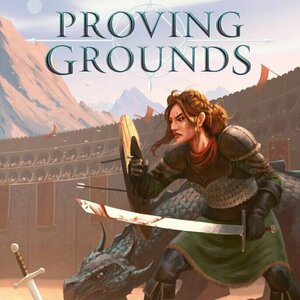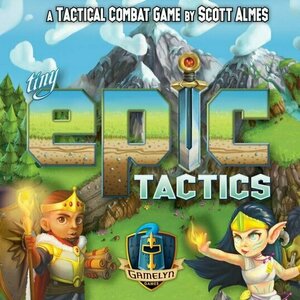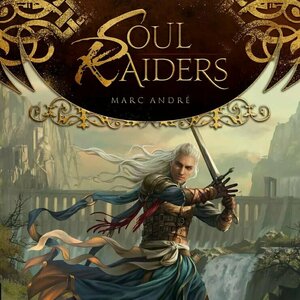
Beachbody On Demand
Health & Fitness and Lifestyle
App
BOD™ App Store Name Beachbody® On Demand – The Best Fitness Workouts BOD App Store...
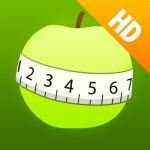
Food Diary and Calorie Tracker by MyNetDiary HD
Health & Fitness and Lifestyle
App
MyNetDiary is the easiest to use and most comprehensive food diary and calorie counter app on the...
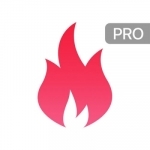
Weight Loss RUNNING PRO
Health & Fitness and Lifestyle
App
SLIM DOWN IN 8 WEEKS. The first running app on the App Store designed specially for weight loss....

Fitocracy - Fitness Collective
Health & Fitness and Social Networking
App
• Work with expert trainers who will help you reach your fitness goals • Easily track any...

Weight Loss RUNNING
Health & Fitness and Lifestyle
App
SLIM DOWN IN 8 WEEKS. The first running app on the App Store designed specially for weight loss....

Welltory: wellness tracker HRV
Health & Fitness and Lifestyle
App
Want to boost your productivity and feel great every day? Track your wellness, stress & energy...

Baby Feed Timer - Breastfeeding Baby Tracker
Lifestyle and Medical
App
“Simple, quick and easy to use – a must for night feeds!” "All the answers to your...
Purple Phoenix Games (2266 KP) rated Proving Grounds in Tabletop Games
Aug 23, 2021
Proving Grounds is a solo fighting dice game with real-time phases. Players will win by defeating eight opponents in battle and will lose (often, in my case) if the heroine suffers too many wounds. The game is played over several rounds, and Renegade has provided an app to act as a timer during the rolling dice phase. Obviously I am terrible at the game, but how does it play and do I feel like continuing to suffer subsequent losses?
To setup a basic game, place the Encounter Board in the middle of the table. Shuffle the enemy cards (with swords & board backs) and deal one per slot around the Encounter Board. These are the first set of enemies Maia will be fighting. Place Battle Markers (silver ninja stars that track wounds inflicted to enemies) in the outlined spaces of the enemy cards. Place Maia’s health token (a heart) on the tracker and one each of the green, yellow, and blue dice on the health area in the space with a rainbow surround. Fill the exhaustion track with one white die per space (on the right side of the Encounter Board), and take the rest of the dice into hand to use as the dice pool. For this review I also used the Dragonling Die module.
As mentioned, Proving Grounds is played solo over a series of rounds. Each round consists of three phases: Roll Dice, Resolve Attacks, and Recover. The first phase of the game, Roll Dice, is also the most chaotic. During this phase the app timer (or your phone or sand timer or sun dial) will allow 60 seconds to roll the dice and arrive at a final result. The interesting aspect of this mechanic at play here is that only sets of dice may be rerolled, not singles. So players may only roll that set of four 3s and not the solitary 1 sitting there all alone. This causes some brain freeze because many games utilize this in reverse, where only singles may be rerolled. Factor that into a 60 second frenzy to get the greatest results and brains will smoke.
Once the timer is up or players are satisfied with the rolled results, they move to the next phase: Resolve Attacks. Each number rolled on the dice correspond to the enemy’s position around the Encounter Board. So that solitary 1 that was rolled earlier is assigned to the enemy in position #1. Here’s the kick in the rear though: any single dice assigned to an enemy will result in a wound dealt to Maia, and would require the player to sacrifice one of the dice to the exhaustion track! Should an enemy require three or more dice but only two are assigned, or if zero dice are assigned, nothing happens to Maia nor the enemy. But those dang single dice will come back to haunt the player. A lot, if they play like I do. Some enemies will require at least one of the dice to be the blue/green/yellow die in order to be successful while others are just straight number of dice. Calculating everything that is needed during the Roll Dice phase is something that I have yet to master.
After attacks are resolved, players enter the Recover phase. During this phase players will gather all assigned dice from the round as well as any dice on the lowest spot of the exhaustion track to be used for the next round. Any enemies that were defeated have left an empty slot on the Encounter Board, so a new enemy will now fill that void. Play continues in this fashion of three phases per round until either eight enemies have been defeated or Maia suffers too many wounds to continue.
Components. I am fascinated by how few components are needed to put a game like this together. Yes, the Encounter Board is mostly unnecessary, but a great way to organize the game and keep everything spacially relevant for those of us that need that. The cards are fine quality and the game has great art. The dice are very cool, but I am unsure how the colors pop for our colorblind gamer friends. While the game doesn’t necessarily refer to the damage markers as “ninja stars” I cannot get over the fact that they are ninja stars. They are certainly out of place in a game like this where I encountered zero ninjas in my plays. Everything else, though, is great and it comes in a nice-sized box: a little smaller than my Century: Golem Edition box.
It was Kane Klenko’s birthday recently, so I wished him a happy birthday on social media and informed him that I was celebrating by playing Proving Grounds. His response was absolutely perfect: “Good luck!” Well, Kane, I never have good luck with this one! It is certainly a combination of poor dice rolling, poor decision making whilst rolling dice, and just dumb luck (emphasis on dumb). I love playing this game but it is infuriating that I have yet to beat it! Even with just the first Dragonling Die module! Gahhhhhh!!!
However, Proving Grounds is an excellent dice game that breaks out of the Yahtzee clone mold and into something fresh and exciting. The twist of only being able to reroll sets instead of singles makes for interesting decisions when you really need to defeat enemy #5 but just cannot roll ANY 5s to save your life (in the game). I just want to beat it once with the Dragonling Die so I can start adding in other modules (oh yes, there are several other modules to add). When games force me to WANT to play them more and more, even for the sheer hope of victory, I consider that a mark of distinction and a sign of a great game.
So if you are like me and enjoy the pain of defeat over and over again then I invite you to try Proving Grounds. It will not be easy. But if you happen to beat it, especially on your first try, please let me know. I need all the cheat codes I can get here. It will stay in my collection probably forever because I just need to overcome it, and then once I figure it out completely, I will just need to wallop it over and over to teach it a lesson. Enjoy Proving Grounds everyone!
Purple Phoenix Games (2266 KP) rated Tiny Epic Tactics in Tabletop Games
Jul 8, 2021
Disclaimer: There are 5 different modes of play in Tiny Epic Tactics. In this review, I will be focusing on the 2-4 Player Competitive mode. There are also expansions for this game, but this review will not cover those materials. I also do not intend to rehash the entire rulebook, but rather provide a general overview of the rules and gameplay. For a more in-depth look at the rules, pick up a copy of the game from the publisher or at your FLGS. -L
Tiny Epic Tactics is a game of strategy and combat in which players will lead their teams of 4 heroes to fight opponents and attempt to gain control of a number of areas in the realm. To setup the game, unroll the map scroll and place the boxes onto their corresponding spaces. Randomly deal each player 1 Unit card from each class (Fighters, Wizards, Rogues, and Beasts), and give them 4 Unit tokens (meeples) in their chosen color, as well as tracker tokens for Health, Ammo, and Mana. Players will select their 4-space starting location, and will place all 4 of their Units on the map. Shuffle the deck of Tactic cards, and deal 2 to each player. Players will look at the cards and select one to keep in hand, discarding the other. Place the Tactic card deck in reach of all players, and place the Control Card nearby, with the 3 Flag tokens on the Start space. The game is ready to begin!
Over a series of rounds, players will take turns performing actions until either one player has had all of their Units captured or one player has captured the final Flag token (based on player count). The remaining players will take one final turn, and then the game ends, VPs are tallied, and the player with the most VPs is the winner! A game turn is made up of four steps, the first of which being to check for Majority Control. To see if you hold a Majority Control over any of the Control Areas on the map, count the number of Units in each triggered Control Area – if your Units make up the majority of Units in that area, advance the corresponding Flag token on the Control card, and if you do not hold the majority, then nothing happens. Once a Flag has been advanced to the final space, it is given to the player who holds Majority Control.
The next step of your turn is to take up to 3 actions with your Units. Possible actions are: Movement, Melee Attack, Missile Attack, and Cast a Spell. All Units have a printed value on their cards for Movement, as well as either Melee Attack, Missile Attack, or Spell Attack value, based on the Unit’s class. All of these actions are pretty self-explanatory, with a couple of extra components – use of Ammo/Mana, rolling dice, advantages/penalties based on Elevation, etc. – that make the gameplay strategic and challenging. The third turn step is to remove Weakened tokens (more on this later), and the final step is to draw a Tactic Card. Look at the card, and either keep it in hand or discard it – you may only ever have 2 Tactic Cards in hand. Play continues in this fashion until the end of the game is triggered, either when a single player has had all 4 of their Units captured or a player has taken the final Flag token. All other players take one more turn and then VPs are tallied for final scoring.
Ok so first thing I want to talk about is the use of boxes to create a 3D map. It is SO COOL. It’s such a unique idea, and one that I honestly haven’t seen before. The added aspect of Elevation in regards to movement and range for attacks really ups the strategic gameplay for me. Want to climb to a higher peak? Ok, that costs +1 movement. Don’t have enough movement to climb up this turn? Then you’re outta luck. Your strategy must always be changing based on where Units are located on the map.
Speaking of strategy, there are several different game elements that you can base your gameplay on – there is no ‘right’ way to play! Maybe you really want to focus on getting Flag tokens, so you try to protect that area and maintain majority at all costs. Maybe you don’t care about the Flags and it’s all about combat to you – you’re on the hunt for enemy Units and Area Control means nothing to you. Or maybe your aim is to complete your Tactic Cards, which will then allow you to perform a special/bonus action upon completion. There are different ways to play this game, and that makes it engaging and entertaining as you must constantly adapt your strategy while trying to figure out how your opponents are playing too!
Another neat element of Tiny Epic Tactics is that on each turn you only have 3 actions – and a single Unit may only perform one action per turn! So you can’t just spend all 3 actions moving and attacking with the same Unit, they must be spread across all of your heroes. That adds to the strategy because you have to set your Units up in advance for certain actions, but must quickly adapt based on the movements of your opponents. You can have a Unit perform a second, different, action on the same turn, but it will then become Weakened. When Weakened, a Unit cannot perform any actions on the next turn, and will have the Weakened condition removed at the end of said turn. Or, on your next turn, you may choose to pay 2 Health to remove the Weakened token and be able to act in that same turn. It’s kind of a gamble – how far are you willing to push your Units, and are you able to sacrifice their abilities for an entire turn in order to removed the Weakened token?
Let’s touch on components for a minute. These components are great, as is to be expected of the Tiny Epic series. The art is colorful and unique, the boxes are sturdy, the cards are nice and thick, and the wooden components are quality. No real gripes from me regarding production quality of this game! The gripe I do have is about the gameplay – specifically a 2-player game. When playing a 2-player game in competitive mode, the game end is triggered after 1 Flag token has been secured. This really can negate any need for strategy or player interaction, because each player starts near a Control Area, and can simply just move there and camp out to take the Flag. In my first games at a 2-player count, I found the gameplay to be kind of bland and not engaging because of this. At higher player counts, you have to interact with opponents on the map as you try to capture Control Areas. If at a 2-player count, you were required to secure 2 Flag tokens, or maybe just mandate that the secured Flag must be the one located in the center of the map, it would encourage more interactions between the players, and thereby elevate the strategy and gameplay in my opinion. Just something to consider.
Overall, I think that Tiny Epic Tactics is a solid game in this series. It is not my favorite by any means, but the gameplay and mechanics fill a gap left by the other Tiny Epics. The strategy required can be high-level, but the simplicity of the physical gameplay makes it feel accessible and inviting to all types of gamers. If you’re looking for a great 2-player Tiny Epic, maybe keep looking, but for a 3-4 player game, Tiny Epic Tactics hits the spot. Purple Phoenix Games gives it a tactical 8 / 12.
Purple Phoenix Games (2266 KP) rated Soul Raiders in Tabletop Games
Jul 5, 2021
Soul Raiders is a storytelling role-playing game for up to four players. Each player takes the role of an aspiring Soul Raider tasked with saving the realms from the influence of evil. The game is played over several sessions that all affect the overarching plot of the narrative, but this preview version simply allows players to learn the game mechanics through a prologue scenario.
DISCLAIMER: We were provided a prototype copy of this game for the purposes of this review. These are preview copy components, and I do not know for sure which final components will be different from these shown. Also, it is not my intention to detail every rule in the game, as there are just too many. You are invited to download the rulebook, back the game through the Kickstarter campaign, or through any retailers stocking it after fulfillment. -T
To setup, follow the instructions in the rulebook. There are too many to list here. Once setup, the play area may look similar to the photo below.
As there are 36 pages in the preliminary rulebook, I am unable to detail everything in this preview. However, I can give an overall gameplay feeling.
Players control pawns (standees in this version, but plastic minis in the final) that will adventure on Location tiles that spawn baddies, traps, and other elements. Each round played has no turn structure; players can take their actions however they like in any order, and sometimes players will take actions simultaneously. Once all players have taken their actions, the baddies will attack (though some attack immediately upon spawning in a Location as well).
Combat is resolved through clever chaining card play. The cards drawn to the players’ hand are multi-use and can be combined with others in hand to pull off complex combos. All players will have access to melee combat cards, movement cards, and also magic spell cards. Utilizing the cards efficiently, as well as leveraging each players’ inherent strengths, can make or break combats and skill checks throughout the game.
In addition to the myriad combats players will face, they will also be able to encounter events, special characters, and traps. Many times these will result in skill checks or other card shedding activities in order to progress the story.
Throughout the game a tracker board constantly keeps players aware of the current vitae of the party (collective health), threat level, and active events. Players will also be using personalized player boards to keep track of their deck of cards, active engaged enemies, and status tokens. Each character has special talents different from each other, and the final game will have at least four characters, whereas this version has two.
If the players can navigate the game efficiently and quickly enough to satisfy the win conditions, then victory is to be shared. However, if you, like me, are still trying to figure out how to win, the game ships with an interesting session saving ability so you can pick up where you left off with any combination of players and characters.
Components. Again, this is a preview copy of the game, and not everything is final. That said, I can see the direction this game is going, and if it results in a successful Kickstarter campaign, I foresee me praising the publisher for their excellent components. Most of the art seems complete, and the character art is so amazing. In contrast, I feel the landscape art doesn’t necessarily match the intensity and details given in the character art. It just feels out of place in an otherwise excellently-illustrated game.
The gameplay, however, felt very fresh and familiar at the same time. I have played several games where the players’ card decks offer multi-use cards in much the same fashion, and here in Soul Raiders, the cards can be played for their numeric values or their special abilities. What I like about this is the ability to use the cards in hand to pull off sweeping combos of insane damage, or to really nail the lockpicking difficulty checks. There will be times the heroes will need to be engaged in combat with four or more enemies, and having certain spells that can wipe out most of them with one card is always very satisfying.
Movement has largely been neglected in my plays of Soul Raiders, as I haven’t found a great way to make it sing as a card type. Players will need to use movement to travel from one Location card to others, but there are also mechanics in place for the heroes to flee away from battles. I have yet to feel the need to flee from battle. I also have yet to truly understand the need for a big selling point for the game – character invisibility. Yes, I can see how being invisible would be a great benefit, but I rarely had the ability cards in hand to use it properly or effectively. I am told, though, that the game will ship with both a normal character mini and a transparent mini to indicate when they are invisible. So there’s that.
All in all I really do enjoy the storytelling gameplay of Soul Raiders. I think this intro prologue scenario has piqued my interest and triggered my desire to play more in the story. I hope that some adjustments will be made to make invisibility and fleeing more important aspects of the game, but for now I am ignoring them almost systematically. That said, if you are looking for a new game with a great theme and some pretty good mechanics, I invite you to check out the Kickstarter campaign launching very soon. I think this would be a great one to have in a collection, especially as I can see it being infinitely expandable with new books of scenarios and small expansion packs with new heroes, etc.
